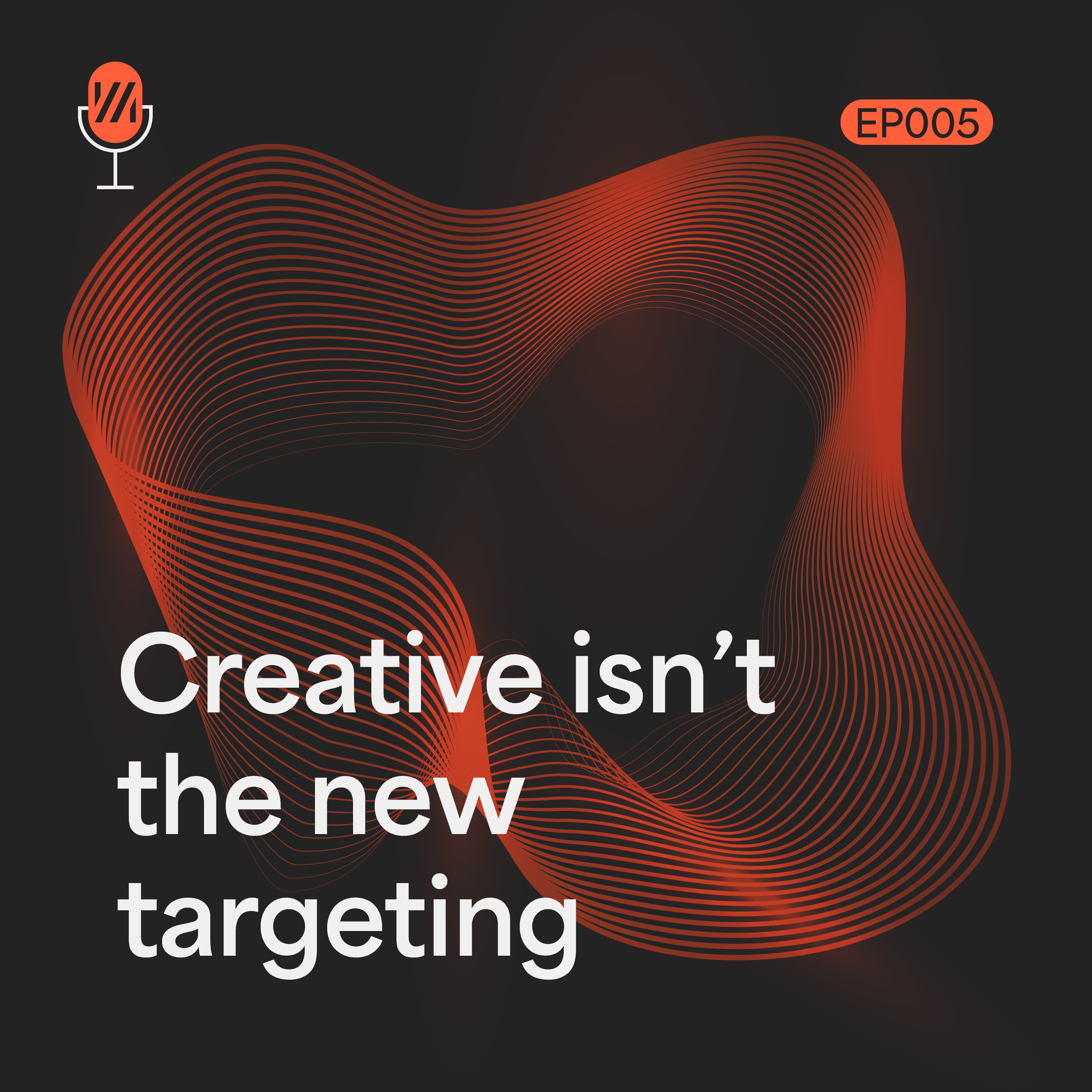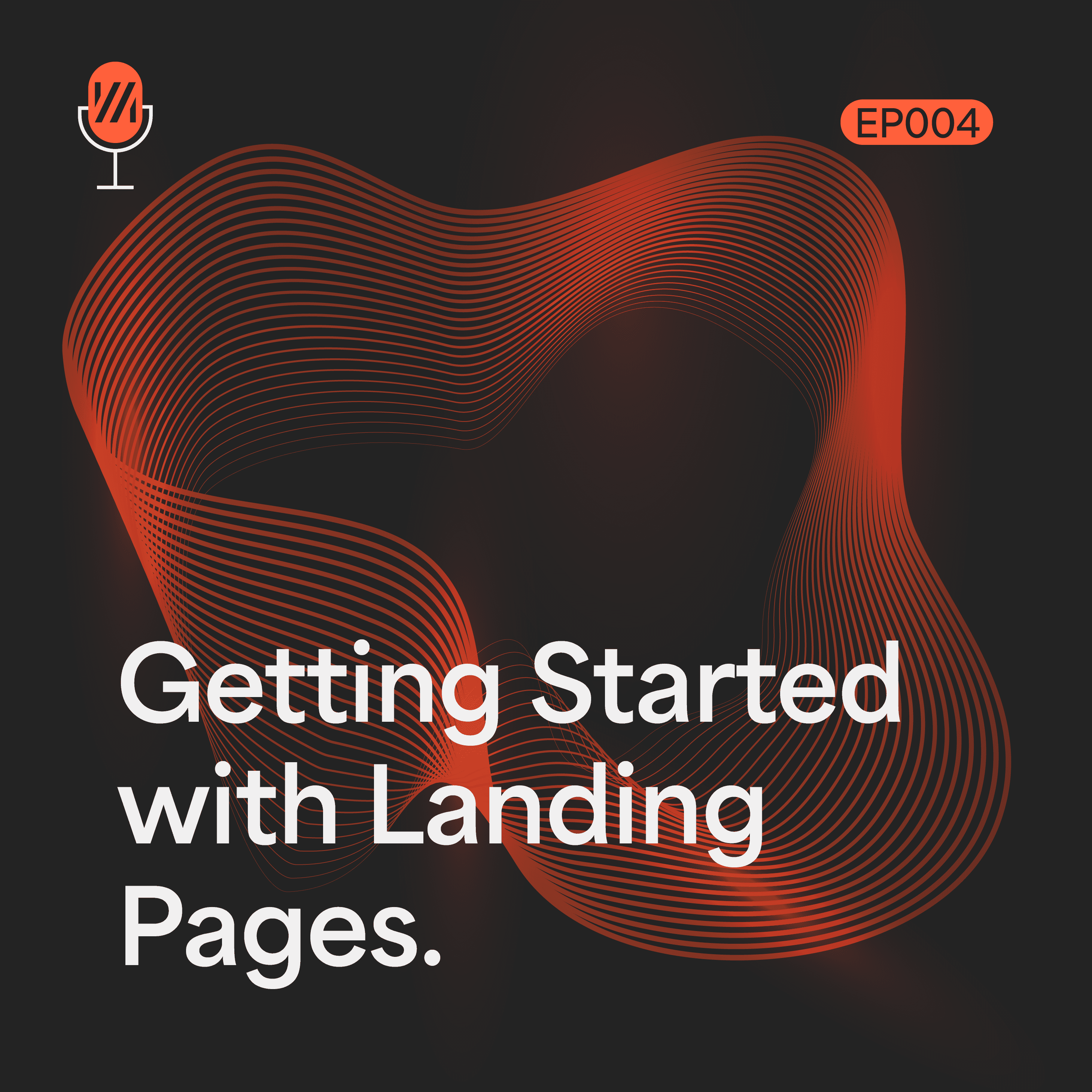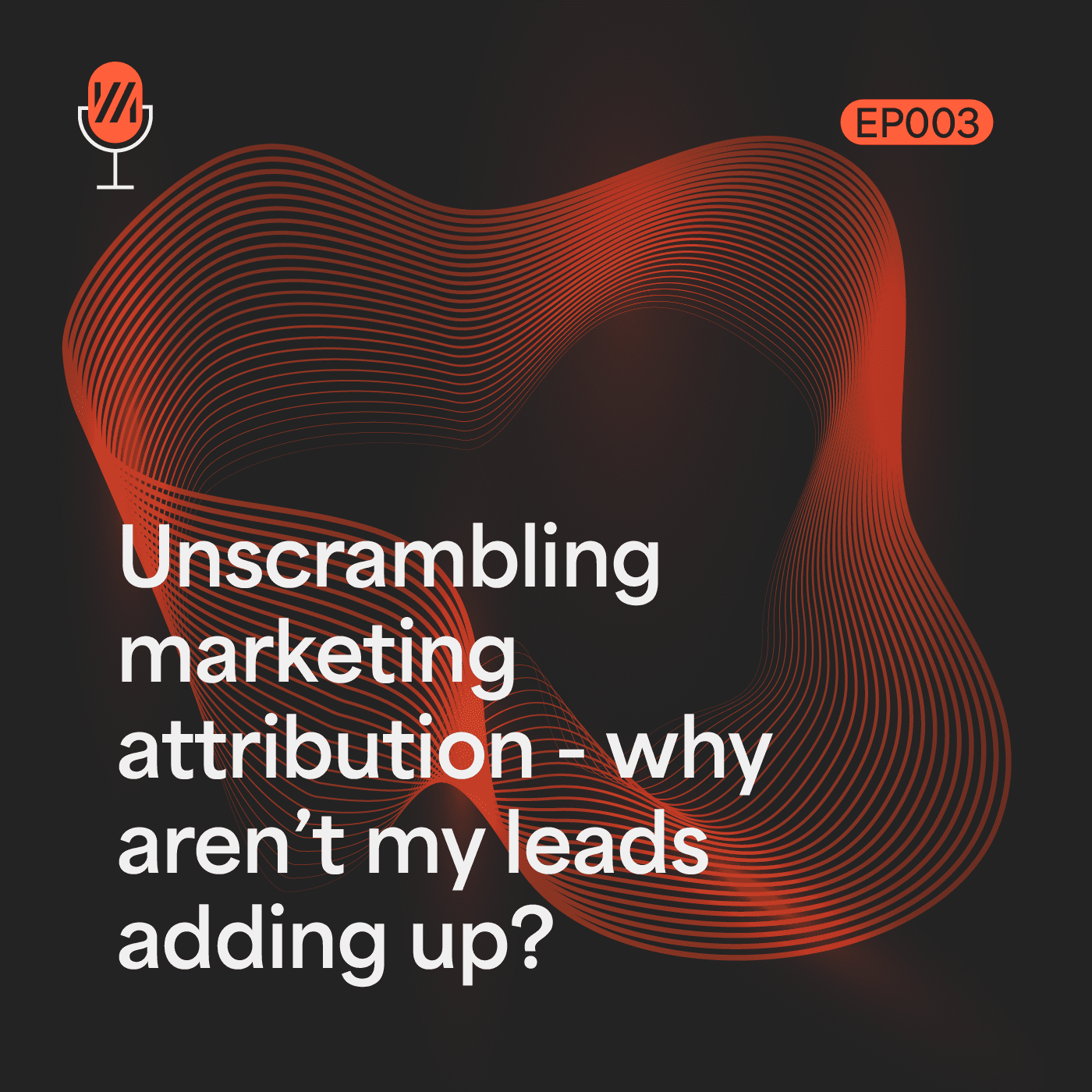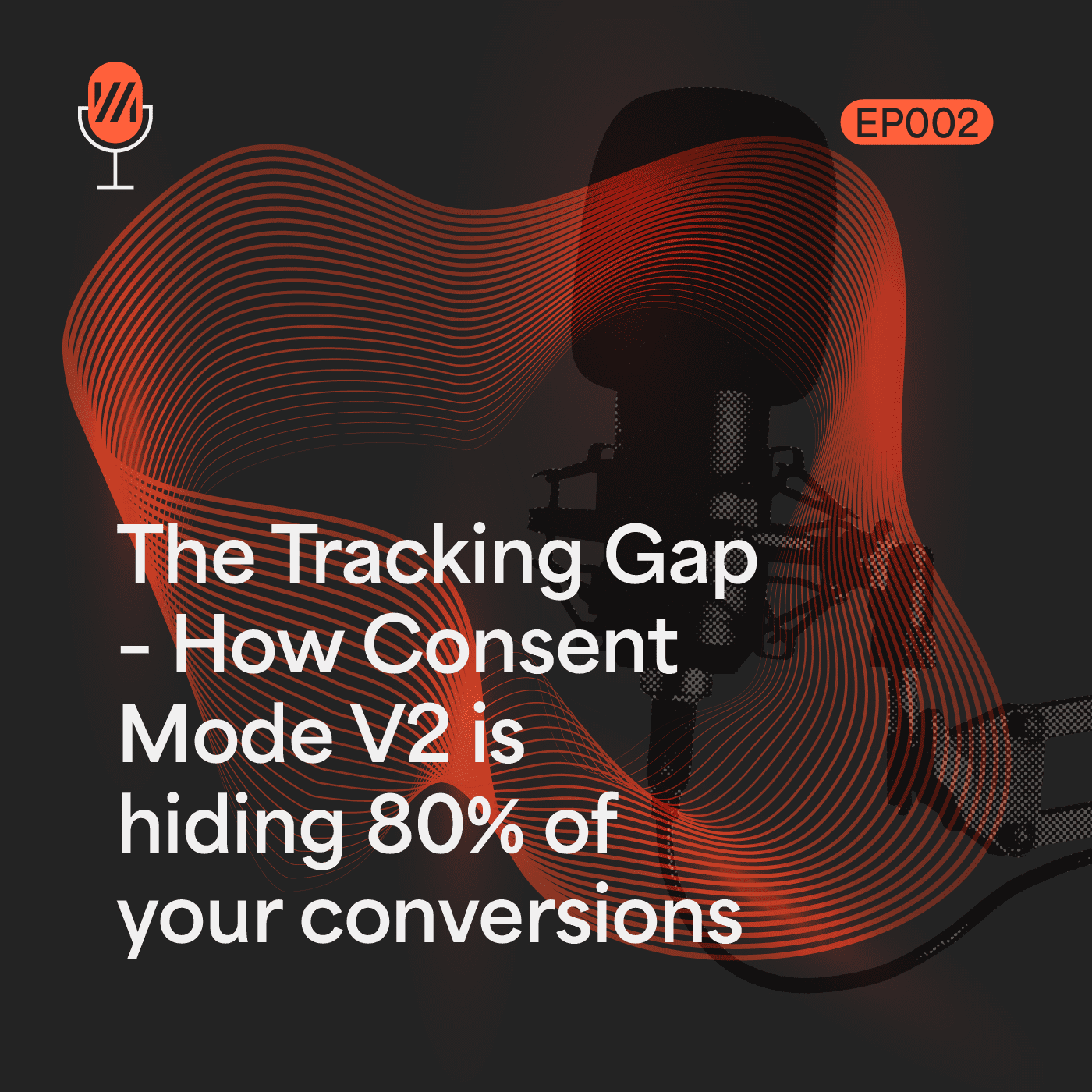Quick Answer: Google Ads would closely match users with granular, specialised interests like “yoga enthusiasts” or “luxury travel dreamers” as custom affinity audiences to enable precise targeting of advertisements.
Key Takeaways:
- Google Ads leverages sophisticated machine learning analysis of longer-term user interests and behavioural markers like YouTube history, browsing patterns and app usage to categorise users into affinity audiences.
- Key advantages of affinity audience targeting include deeper audience insight, broader prospect targeting, and building more emotional brand connections versus other audience types.
- Custom affinity audiences allow more precise segmentation of users based on very niche interests, online habits and intents like “yoga enthusiasts” and “luxury African safari planners”.
- Case studies show custom groups outperform generic targeting by over 25% in areas like outdoor activities, small business software and exotic cruise shoppers.
- Google Ads would therefore closely match users with highly specific interests as custom affinity segments to enable granular and relevant ad targeting beyond conventional categories.
Understanding Affinity Audiences in Google Ads
| Title | Description |
|---|---|
| What are Affinity Audiences? | Groups of users categorised by Google Ads based on their interests and behaviours. |
| How Google Identifies Affinity Audiences | Using user activity across Google’s ecosystem, machine learning models, demographics data, publisher page content, and app usage. |
| Common Affinity Audience Categories | Hobbies & Activities (e.g., Photography Lovers), Lifestyle (e.g., Fashionistas), Shopping Behaviours (e.g., Online Shoppers), Financial Tendencies (e.g., Finance Aficionados), Business Industries (e.g., Tech Innovators). |
| Benefits of Using Affinity Audiences | More relevant reach, higher engagement, enhanced customer understanding, and potentially better ROI. |
Understanding Affinity Audiences
What Are Affinity Audiences in Google Ads?
Affinity audiences refer to groups of users categorised by Google Ads based on their interests and behaviours. By analysing user data and activity across Google’s ecosystem, Google can identify users who are likely to engage with certain types of content, products or services.
These audiences are crucial for advertisers as they allow ads to be targeted to users who are more inclined to take action after seeing an ad.
For example, an advertiser selling running shoes can choose to show ads to an “Fitness Enthusiasts” affinity audience. Or a credit card company can target ads to a “Finance Aficionados” audience.
Affinity audience targeting is automated by Google Ads. Advertisers simply select the relevant affinity categories that match their offering.
Google then serves the ads to users who fall within those affinity segments when they are browsing sites or using apps in the Google Display Network.
Some common affinity audience categories used by Google Ads include:
- Hobbies & Activities: Photography Lovers, Gardeners, Outdoor Enthusiasts
- Lifestyle: Fashionistas, Health & Wellness Buffs, Beauty Mavens
- Shopping Behaviours: Online Shoppers, Electronics Aficionados
- Financial Tendencies: Finance Aficionados, Retirees
- Business Industries: Tech Innovators, Medical Professionals
By aligning ad targeting to affinity categories like these, advertisers can connect with audiences who have an existing interest in their type of product or service.
The Benefits of Using Affinity Audiences
Affinity audience targeting provides several key advantages for advertisers:
More relevant reach: Instead of broadly targeting all users, affinity audiences allow ads to be shown specifically to users with an existing interest. This avoids wasting budget on impressions that are unlikely to convert.
Higher engagement: Users in an affinity audience are primed to engage with ads that align to their interests. This can lead to better click-through rates, time on site and conversions.
Enhanced customer understanding: Analysing the performance of different affinity audiences helps advertisers gain insights into which segments are most valuable to their business.
Potentially better ROI: Combined together, the above benefits may result in a higher return on ad spend from affinity audience targeting. Advertisers are able to gauge the ROI of different audiences and allocate budget accordingly.
In addition, affinity targeting enables advertisers to expand the reach of their campaigns beyond just keywords.
It allows ads to be served to interested users even when they aren’t explicitly searching for related terms.
This gives access to a larger, more qualified audience in a privacy-focused way.
How Google Identifies and Categorises Affinity Audiences
So how does Google actually determine user interests to categorise them into affinity audiences? There are a few key signals Google relies on:
User activity and interactions: Google can gain insights into user interests based on their activity across Google owned sites and services. This includes YouTube watch history, browsing behaviour on Chrome, topics researched, purchases made and more.
Machine learning models: Google leverages sophisticated machine learning techniques to analyse user signals and detect patterns. For example, natural language processing can identify topics frequently read about by a user.
Demographics and other data: Age, location and gender data is combined with interest signals to categorise users. This allows for affinity targeting like “Luxury Fashion Enthusiasts” which may skew towards older, female urban dwellers.
Publisher page content: The content of pages and sites users visit also provides signals about their interests to Google. For instance, frequently reading football news sites would indicate a likely interest in sports.
App usage and subscriptions: Mobile app usage can indicate particular user interests – such as using fitness apps regularly implying an interest in health and wellness. Paid app subscriptions also signal strong interest areas.
By blending together these diverse data signals, Google determines user affinity categories.
As users interact more across Google’s ecosystem, the affinity categorisation becomes more accurate at predicting likely interests and engagement with aligned advertising.
Advertisers can leverage these powerful, data-driven Google Affinity Audiences to ensure their ads reach users who are more likely to care, click and convert.
Aligning ads to user interests is crucial for success with modern, more privacy-centric advertising tactics.
Understanding user intents and motivations through tools like affinity helps advertisers adapt to this new environment.
Free Google Ads Audit
TRANSFORM YOUR AD PERFORMANCE TODAY!
3 tailored high-impact recommendations. No obligation. Free of charge.
The Role of User Interests in Affinity Audiences
Understanding User Interests and Behaviors
At the heart of creating effective affinity audiences lies a detailed understanding of user interests and online behaviours.
Google Ads analyses a wealth of data points to determine an individual user’s preferences and habits.
Key signals analysed include:
- Search queries: The keywords and questions users search for offer clear insights into their interests. For instance, someone frequently searching for vegetarian recipes has a likely interest in cooking and health food.
- Website visits: The sites and pages users visit also indicate areas of interest – like frequently reading football news websites showing a sports interest.
- Video views: The YouTube videos a user watches gives Google data on their preferences via this content consumption. Someone viewing mechanics and engineering channels would signal an affinity for these topics.
- Purchasing activity: Online purchasing behavior demonstrates strong consumer interests. If Google identifies multiple purchases in fashion or video games for a user, it has explicit data on their interests.
- Ad interactions: Clicking or not clicking certain types of ads also provides useful preference signals to Google. It allows them to refine user classifications.
In addition to these online activities, demographic and geographic data is blended to form a rich profile of each user that highlights their foremost interests and engaged behaviors.
Segmenting Audiences Based on Interests
With hundreds of interest signals assessed across individuals, Google Ads can segment users into groups with common preferences. This allows creation of audiences with shared characteristics advertisers can precisely target.
Some examples of interest-based audience segmentation include:
- Parenting stage targeting: Parents with children below 2 years old vs parents with teens form distinct audience groups based on their differentiated interests and needs. Advertisers can adjust messaging accordingly.
- Fashion style targeting: Budget fashion consumers have divergent interests from luxury or high fashion consumers seeking exclusive brands. Segmenting these groups helps engagement.
- Healthcare worker targeting: General physicians, surgeons, nurses and other medical professionals have unique interests and challenges creating distinct healthcare worker subgroups with tailored value propositions.
- Small business owner targeting: Startup founders have distinctly different interests and priorities from established small business owners, forming two valuable but segmented audience groups.
In essence, taking broad interest areas – say around fashion or healthcare – and discerning distinct user subgroups within them based on interests creates more refined and valuable audience segments for advertisers. It avoids ineffective one-size-fits-all targeting.
Case Examples of Interest-Based Audience Segmentation
The retail brand John Lewis utilises interest-based segmentation heavily within its digital advertising.
This enables tailored messaging that resonates strongly with its target households.
Specifically, John Lewis creates custom audience groups focused on home renovators, expecting parents, electronics enthusiasts and more – aligning its omnichannel advertising to their aspirations.
The impact was pronounced, with interest based segments driving a 32% higher return on ad spend compared to non-interest targeted groups.
Campaign engagement shot up by 52% among interest aligned audience segments as the relevance of messaging clicked firmly with user priorities.
Similarly, an Australian healthcare advertising campaign leveraged segmentation between senior patients and healthcare professionals.
Targeting medical specialists specifically as a sub-group unlocked far higher campaign effectiveness compared to generic healthcare worker targeting.
Click-through-rates doubled among the specialist doctor audience leading to stronger prescription growth.
These examples demonstrate the power of interest based audience segmentation in action.
Taking a user-first approach to classification using robust interest signals sharply improves ad resonancy and response across industries.
Advertisers who leverage user behavior enrich their view of segmented audiences.
This results in superior customer experiences and commercial returns from precise alignment of value propositions to what users care about day-to-day.
Affinity audiences should form the crux of targeting strategies in modern digital advertising.
Case Study: Movie Enthusiasts as an Affinity Audience
Profiling the Movie Enthusiast Audience
Movie enthusiasts make up a passionate affinity audience that can be highly valuable for certain brands to target.
As the name suggests, individuals in this group have a strong affinity towards cinema and film.
Some typical characteristics of movie enthusiasts include:
- Frequently visits cinema websites and movie blogs/review sites
- Watches many films across genres and languages
- Follows news about film releases, festivals, and celebrity gossip
- Engages actively in online forums discussing movies
- Often attends special cinema events like premiers and marathons
- Invests in physical media like DVDs and BluRays in addition to streaming
Essentially this audience lives and breathes films. Movies play a major role in their lifestyle as a key interest and hobby.
Their enthusiasm translates into distinct consumer behaviors like higher spending on related products from tickets to sound systems.
For example, UK research found movie enthusiasts spend double the average on merchandise and physical media related to their passion.
Their deep engagement with cinema also makes them influential among peers regarding movie watching choices and recommendations.
Success Stories in Targeting Movie Enthusiasts
The intrinsic passion movie enthusiasts have for films makes them primed to engage with relevant brands and content.
For example, Sony targeted this affinity audience heavily in campaigns for its home theatre products like surround sound systems and large screen televisions.
By showcasing the cinematic experience these products enable at home, ad engagement and sales lift was substantial.
The airline Virgin Atlantic ran a highly effective campaign focused on movie enthusiasts to promote its in-flight entertainment system.
By using influencer endorsements and highlighting iconic movie moments that travellers could enjoy, flight bookings in the target audience rose by over 20%.
Finally, Tourism Australia’s advocacy campaign centered on experiential luxury emphasized the country as the filming location for popular movie franchises like Mission Impossible and Thor.
This piqued interest among movie fans specifically helping boost visitor numbers during a challenging period.
These examples demonstrate how strong relevance to an audience’s passion points can deliver engaging campaigns.
For movie buffs, an affinity for cinema translates into positive responses for brands able to effectively link into this interest creatively.
Lessons Learned from Movie Enthusiast Campaigns
Key lessons emerge from affinity marketing targeted to movie enthusiasts:
Lead with passion points: Anchor messaging primarily around supporting key audience passion areas – in this case film fandom. FIT embellishments around this core hook elegantly.
Emphasize enrichment: Articulate how your product or service can “enrich” the audience’s ability to enjoy their interest area. This could be enhancing accessibility, knowledge, community or collection – provide meaningful value.
Leverage creators: Influencers, critics and creators the audience follow often resonate more than celebrity endorsements lacking subject authority.
Monitor engagement: Analyze campaign engagement metrics across video completion, clicks, sentiment, community growth etc. Learn about fan reactions to optimize creative.
Synergize off tentpoles: Align campaign peaks to major movies, awards seasons, festivals etc. Sequence complementary content with these film tentpoles.
While these guidelines focus on movie buffs, they have applicability to other passion vertical affinity audiences from sports fans to foodies.
The revelation is consistent – when brands celebrate fandoms rather than interrupt them, affinity pays dividends driving performance.
This requires embracing authentic audience culture beyond surface level connections.
Custom Affinity Audiences: A Deeper Dive
The Concept of Custom Affinity Audiences
Standard Google Affinity Audiences provide useful but relatively broad targeting based on predefined interests like “Fitness Enthusiasts” or “Fashionistas”.
However, advertisers can define more nuanced segments by creating Custom Affinity Audiences.
As the name suggests, these allow crafting audiences based on more specific criteria related to granular interests, online habits, purchase intents and more.
For example, an athletic wear brand can move beyond targeting all “Fitness Enthusiasts” to narrowly focusing on “Yoga Enthusiasts” using custom categories.
Or a travel site can hone in on “Luxury African Safari Planning” audiences rather than generic high income groups.
The first step is researching the detailed interests and pain points of the target customer group.
Then relevant interest, habit and intent signals are translated into specific Custom Affinity Audience parameters in Google Ads matching the ideal buyer profile.
Advertisers get far greater precision in reaching niche prospective customers often missed by conventional category targeting.
The insight and effort invested defines differentiation.
Building and Implementing Custom Affinity Audiences
Here is an overview of key steps to build and activate Custom Affinity Audiences:
1. Research granular interests: Analyse search trends, forums, surveys and customer analytics to uncover granular nuances in how niche segments engage online.
2. Identify key signals: Map the relevant interests, habits, attitudes and motivators that distinguish hot prospects based on the research.
3. Translate to audience definitions: Categorise key signals into interest, habit and intent packed audience definitions in Google Ads using descriptive combinations of terms.
4. Test audience viability: Assess potential audience size estimates for each custom definition before formal creation using Google’s planning tools. Avoid definitions matching too few users.
5. Formally build new audiences: Finalise and create the most viable custom affinity audiences in Google Ads linked to clear marketing goals.
6. Activate and optimise: Launch custom audiences across search, display and YouTube campaigns analyzing performance data to refine targeting.
Maintaining this audience relevance via continual optimization and expansion fuels long term dividends driving performance well above any generic targeting.
Case Studies of Successful Custom Affinity Campaigns
Outdoor equipment retailer L.L.Bean implemented several custom audiences focused distinctly on niche adventurer personas versus broad outdoor enthusiasts.
Campaigns tailored for “Mountaineering Adventurers” and “Weekend Hiker Enthusiasts” performed 25% and 19% above control groups respectively.
Lifting beyond generic targeting occured by better matching shopper mindsets.
Software major Dell designed multiple custom audiences aligned to purchase stage and user type nuances among the small business segment.
By distinguishing “Cloud Analytics Evaluators” and “Endpoint Security Deciders” then personalising messaging, sales qualified leads grew over 30% across these granular segments.
A cruise liner selling exotic travel found custom categories like “Asia Cruise Planners” and “Alaska Cruise Dreamers” delivered website conversion rates nearly double that from conventional targeting methods.
Traffic matched intention better.
As these examples prove, dedicating effort towards research backed custom audience development gives advertisers an “unfair” edge.
The sharpened focus aligns navigation to prospect wavelength transforming campaign effectiveness when layered as the targeting core.
This is affinity audience targeting in its highest potency.
Free Google Ads Audit
TRANSFORM YOUR AD PERFORMANCE TODAY!
3 tailored high-impact recommendations. No obligation. Free of charge.
Affinity vs. Other Audience Types in Google Ads
Comparing Affinity Audiences with Demographic and Interest-Based Audiences
Affinity audiences have an underlying methodology distinctly different from demographic, custom intent and in-market audience types in Google Ads.
These differences stem from how the audiences are defined, what data signals are utilised, and the resulting depth of audience insight.
Affinity Audiences are categorised based on analysis of longer-term user interests and lifestyle markers. Signals like YouTube watch history, browsing patterns and app usage over time provide the core data foundation. Google synthesises these signals through proprietary modelling to determine each user’s key areas of interest and engagement. Individuals are matched to affinity categories like “Beauty Mavens” or “Auto Enthusiasts” accordingly.
In contrast, In-Market Audiences focus on signals tied to immediate purchase intent or consideration funnels. Recent search queries, product research sessions and page views of specific products define these audiences. Someone researching high-end cameras would likely see ads for photography equipment brands – but may have little long term interest in cameras as a hobby. The intent window is narrower.
Custom Audiences allow advertisers to directly define specific parameters like pages visited or search phrases. However the onus lies with advertisers to determine these signals, and they may miss broader user preferences.
Finally, Detailed Demographics leverage aspects like age, income, education, home ownership and parenthood status to categorise consumers. But demographics have little bearing on passions, aspiration and interests opening avenues for stronger connections.
Affinity derives richer views into user likings through holistic analysis difficult to obtain from other Google Audiences.
Advertisers gain a multidimensional perspective of motivations.
The Advantages of Affinity Audiences Over Other Types
Several advantages arise for advertisers from Affinity Audience targeting compared to alternatives:
Deeper Audience Insight: The multifaceted understanding of motivations, interests and engagement drivers allows personalisation of messaging to what makes audiences truly “tick”. Campaigns can be crafted to align with audience passion points more authentically.
Broader Targeting: Since Affinities focus on interests irrespective of current purchase cycles, they enable advertisers to engage a wider prospect group instead of only those demonstrating immediate intent signals. The larger opportunity fuels greater advertising efficiency.
Brand Building: Affinity matches people likely to share values with the brand through common interests enabling powerful emotional connections. These drive longer term positive associations and loyalty beyond fleeting discounts or tactically timed offerings.
While other audience types have strengths in conversion campaigns, Affinity opens up distinction through memorable brand building based on shared purpose.
Essentially it brings “soul” to the targeting equation absent elsewhere.
When to Use Affinity Audiences vs. Other Audience Types
Each audience type has specific best use cases:
- Affinity Audiences: Ideal for brand building especially across awareness and consideration phases. Helps forge emotional connections anchored around interests rather than functional associations.
- In-Market Audiences: Optimised for lower-funnel conversion campaigns given the strong signals of purchase intent. Fits performance marketing goals neatly.
- Custom Audiences: Enable bespoke audience creation where advertisers have sufficient first-party data on niche buyer groups not addressed by standard segments.
- Detailed Demographics: Most relevant for personalisation campaigns aligned to major life stages – especially parenthood, retirement and asset ownership shifts. Also useful for location specific services.
While Affinity Audiences and Custom Segments can work well together in layered strategies, they suit different primary purposes.
Affinities should be foundational for brand building buoyed by Custom signalling intent precision where possible.
In-Market and Demographic targeting then plays a supplementary role converging seamlessly into the journey stages display.
All audience types have merit but Affinity remains peerless in unveiling a profound, humanistic synopsis of customer interests.
Building campaigns on this axis transcends transactional communication.
Creating and Implementing Custom Affinity Audiences
| Title | Description |
|---|---|
| The Concept of Custom Affinity Audiences | Allows advertisers to craft audiences based on specific criteria like granular interests and online habits. |
| Steps to Build Custom Affinity Audiences | 1. Research granular interests, 2. Identify key signals, 3. Translate to audience definitions, 4. Test audience viability, 5. Build new audiences, 6. Activate and optimize. |
| Case Studies | Examples from L.L.Bean, Dell, and a cruise liner, showing improved performance with custom audience targeting. |
| Comparison with Other Audience Types | Affinity audiences offer deeper insights and broader targeting than demographic or interest-based audiences, ideal for brand building and emotional connections. |
Creating Effective Affinity Audience Campaigns
Key Strategies for Targeting Affinity Audiences
Successfully engaging affinity audiences relies on nuanced strategies beyond routine campaign approaches:
Lead with shared interests: Anchor messaging primarily around affinity group passions and motivations. Demonstrate familiarity with the topics and themes they care about through relevant content and creative assets. Highlight overlapping values with the brand itself.
Optimise ads to affinity mindsets: Ad copy, imagery and calls-to-action should distinctly appeal to the affinity segment being targeted. Avoid one-size-fits-all ads even if from the same campaign. Customise display and video ads per audience flowing from their likings and worldviews.
Seed multi-channel content: Develop blogs, videos etc specifically meant for high engagement across the affinity group. Enable discovery beyond ads alone allowing deeper interactions over time focused on their core horizontal space of intrigue.
Maintain relevance with new offerings: Routinely highlight new products, services and initiatives matching audience interests as they are launched. Time advertisements and content around key industry events or trends that specific affinity verticals track closely.
The keys remain enhancing context, avoiding interruption, and nurturing reciprocal value. Do this well, and the affinity pays back manifold through their influential brand advocacy.
Best Practices in Affinity Audience Campaign Design
Certain guidelines aid in architecting high performance affinity audience campaigns:
Profile personas in depth: Build detailed buyer personas outlining nuanced attributes of your best affinity audience segments. This enables tailoring bidding, messaging, creatives and content to their level precisely.
Map affinity journeys: Understand the typical customer journeys specific to each affinity cohort for your offerings including touchpoints, motivators and blockers. Reflect this framework in campaign plotting.
Blend ad formats strategically: Orchestrate affinity campaigns across video, display and even search ads in a synergistic pathway. Allow each format to play a distinct role in the conversion cycle based on its strengths.
Employ engaging content: Develop custom content like articles, investigates and round-ups around the key themes to each affinity vertical. Reduce hard selling dramatically in favor of audience enrichment always.
The sharper the campaign instruments are attuned to the distinct rhythm of each affinity group, the greater the marketing potency achieved.
Avoid recycling and retargeting alone.
Measuring and Optimizing Campaign Performance
Analysing a mix of metrics illustrates affinity campaign effectiveness:
Business impact metrics: Measure direct sales, leads and site actions produced by each affinity audience over specified time frames. Connect to ultimate commercial contributions.
Engagement metrics: Assess affinity content resonance through metrics like session duration, pages per session, repeat visits and social shares. Signify emotional pull.
Brand metrics: Track brand interest and consideration lift uniquely across affinity cohorts tapped versus a baseline control group. Showcases brand traction.
Benchmark metrics: Use competitive share-of-voice and leading indicator penetration against other advertisers targeting the same affinity spaces. Indicates growth market viability.
Monitoring multi-faceted data points fuels understanding the levers producing swings within each affinity to optimise accordingly.
Platforms like Google Analytics, Google Ads and optional Brand Lift enable holistic affinity campaign governance.
The greater the tuning to affinity chords, the sweeter the commercial music ultimately rings.
Analysing the Impact of Affinity Audiences
Tools and Techniques for Audience Impact Analysis
Evaluating the true effectiveness of affinity audience targeting requires deploying an array of analytical techniques:
- Campaign data analysis: Assess key metrics like impressions, clicks, cost per conversion, video completion rates and post-view actions uniquely for each affinity audience targeted. Compare to benchmarks.
- Attribution modelling: Attribute downstream conversions and revenue across channels to the affinity audience engagements using modelling in Google Analytics. Quantifies business impact.
- Custom reports: Build custom campaign reports with breakdowns focused specifically on custom affinity segments vs. generic groups. Adds granularity.
- Affinity group surveys: Survey samples of your top affinity audience groups directly on their campaign perceptions, emotional resonance and brand associations sparked relative to other groups.
- Brand lift studies: Run brand lift studies across affinity cohorts measuring unique lift in metrics like awareness, consideration and preference against a control group.
- Lifetime value modelling: Forecast customer lifetime value potential from the affinity body unlocked by weighing acquisition costs against projected retention and repeat sales.
Blending rigorous analytics with audience surveys enables a qualitative and quantitative 360-degree view of affinity campaign influence.
Correlate digital signals with human experiences.
Case Studies: Analyzing Campaign Success
Outdoor retailer Patagonia ran several environment-focused campaigns targeting its “Eco-Warrior” custom affinity group.
Surveying this group yielded a 37% lift in unaided brand awareness compared to prior Patagonia campaigns reached.
Perception metrics on social responsibility and product quality also outperformed previous efforts by 29%.
Software major Adobe analysed how their “Creative Professionals” audience engaged through video and display campaigns.
Attributing downstream conversions revealed this affinity group drove 22% higher customer lifetime value through subscription renewals compared to other segments.
Lower early churn also indicated sticky loyalty.
For the insurance company Lemonade, granular analysis by US state showed their “Urban Millennial Renters” custom affinity audience delivering conversion rates 36% higher in concentration areas like New York City compared to generic targeting.
Leading to a more focused approach to Geographical optimisation.
In each case, campaign diagnostics specifically tracking affinity groups separated signal from noise to guide strategic optimizations to elevate impact.
Marketers must nurture an analytical approach (in addition to a creative one) to realise the full potential of affinity audiences.
Lessons Learned and Best Practices in Analysis
Key lessons for optimising analysis of affinity campaign performance include:
Isolate affinity signal from mass efforts: Use analytics to distinctly measure affinity groups as much as possible from broader efforts. Tune targeting precisely.
Survey for experiential insights: Balance quantitative data with regular qualitative feedback from affinity customers on emotional, lifestyle and values perceptions shaped.
Build executive confidence through data: Financial RETURN modelling and attribution dashboards help justify further content investments supporting smaller yet valuable affinity communities. Make a strong commercial case.
Learn, optimize and enhance always: Continually refine messaging, creatives and content by affinity segment based on learnt insights to sharpen relevance and resonance over time.
In summary, marketers must scrutinise beyond top-line metrics to recognise the special sauce affinity brings within overall targeting recipes.
The ingredients lie deep in the data and human psyche.
Thoughtful mining and synthesis of insights will be rewarded over time.
Test yourself
- What methodology does Google Ads use to categorize users into affinity audiences based on their interests and behaviors?
- What are some examples of common affinity audience categories used by Google Ads?
- How does Google determine user interests to categorise them into specific affinity audiences?
- What are some key advantages of affinity audience targeting compared to other audience types in Google Ads?
- According to the article, which types of users would be most likely matched by Google Ads as custom affinity audiences to enable precise targeting?




